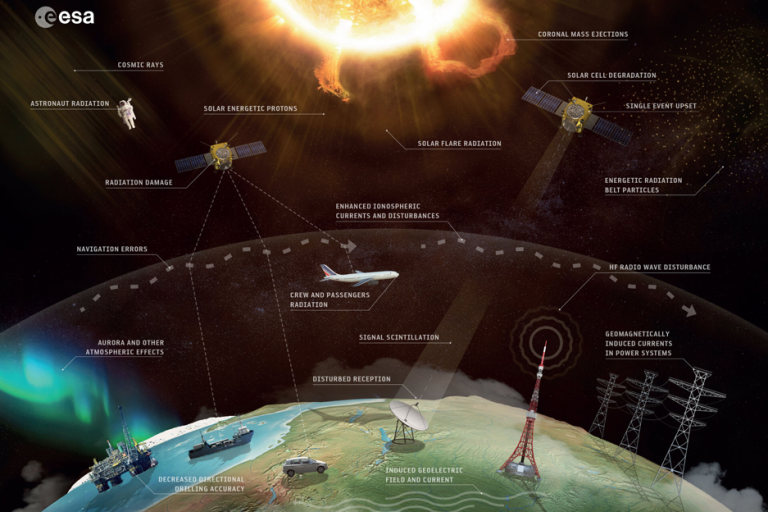WMO integrates Space Weather as an Earth system domain within WIGOS
The WMO Commission for Observation, Infrastructure and Information systems (INFCOM-3) has concluded its Four-year Plan for WMO Activities related to Space Weather (2024-2027), which will be submitted for adoption to the Executive Council in June. The plan addresses the three main pillars of the WMO Infrastructure: observing infrastructure, modelling and prediction, and data exchange. Furthermore, it seeks to advance the capabilities of Members to provide valuable services to various economic sectors that are prone to threats from Solar eruptions and consequent Space Weather phenomena.

Space weather phenomena, triggered by events occurring on the Sun and in interplanetary space, can affect the Earth’s natural environment on both regional and global scales. They can significantly impact several technologies and services such as communication (HF radio communication and satellite communications), Global Navigation Satellite Systems (GNSS), the electrical power grid, and spacecraft operation. To successfully mitigate these detrimental impacts of space weather, extensive observational capabilities on Earth and in space (from the Sun to the Earth) should be accompanied by numerical modelling capabilities representing both the phenomena and their technological impacts.
Drawing on the analogy with operational weather services, WMO has been making efforts to integrate Space Weather within its activities for over a decade. Since 2011, Space Weather has been included in the Rolling Review of Observation Requirements. Earlier this week, INFCOM-3 adopted the inclusion of a Space Weather Observing system as part of several Amendments to the Manual on the WMO Integrated Global Observing System (WIGOS). The observing system monitors both the solar sources of Space Weather and its impacts in Space and on Earth, and involves both ground-based and space-based measurements.
However, achieving further integration requires additional efforts. The current Four-year plan specifies a number of next steps to take and is an evolution of previous plans. It increasingly addresses concrete implementation activities such as detailing the attributes of the Space Weather Observing system, elaborating the data formats and data exchange mechanisms, categorising the data under the WMO Unified Data Policy, as well as establishing best practices in forecasting and modelling.
The plan particularly highlights the need for cooperation and collaboration with other International Organizations involved in various elements of the Space Weather Services value chain. These elements range from observations and modelling (for both research and operational purposes) to working with end-users. This approach aims to further facilitate effective coordination with initiatives external to WMO and enable long-term improvements of space weather services.
For daily highlights, visit the INFCOM-3 dedicated webpage.
Related Documents
- Doc 8.1(1): Draft Recommendation 8.1(1)/1 – Amendments to the Manual on the WMO Integrated Global Observing System (WMO-No. 1160)
- Doc 8.5(2): Draft Recommendation 8.5(2)/1 - Four-year Plan for WMO Activities related to Space Weather 2024-2027
*Documents are available on the INFCOM-3 minisite.

